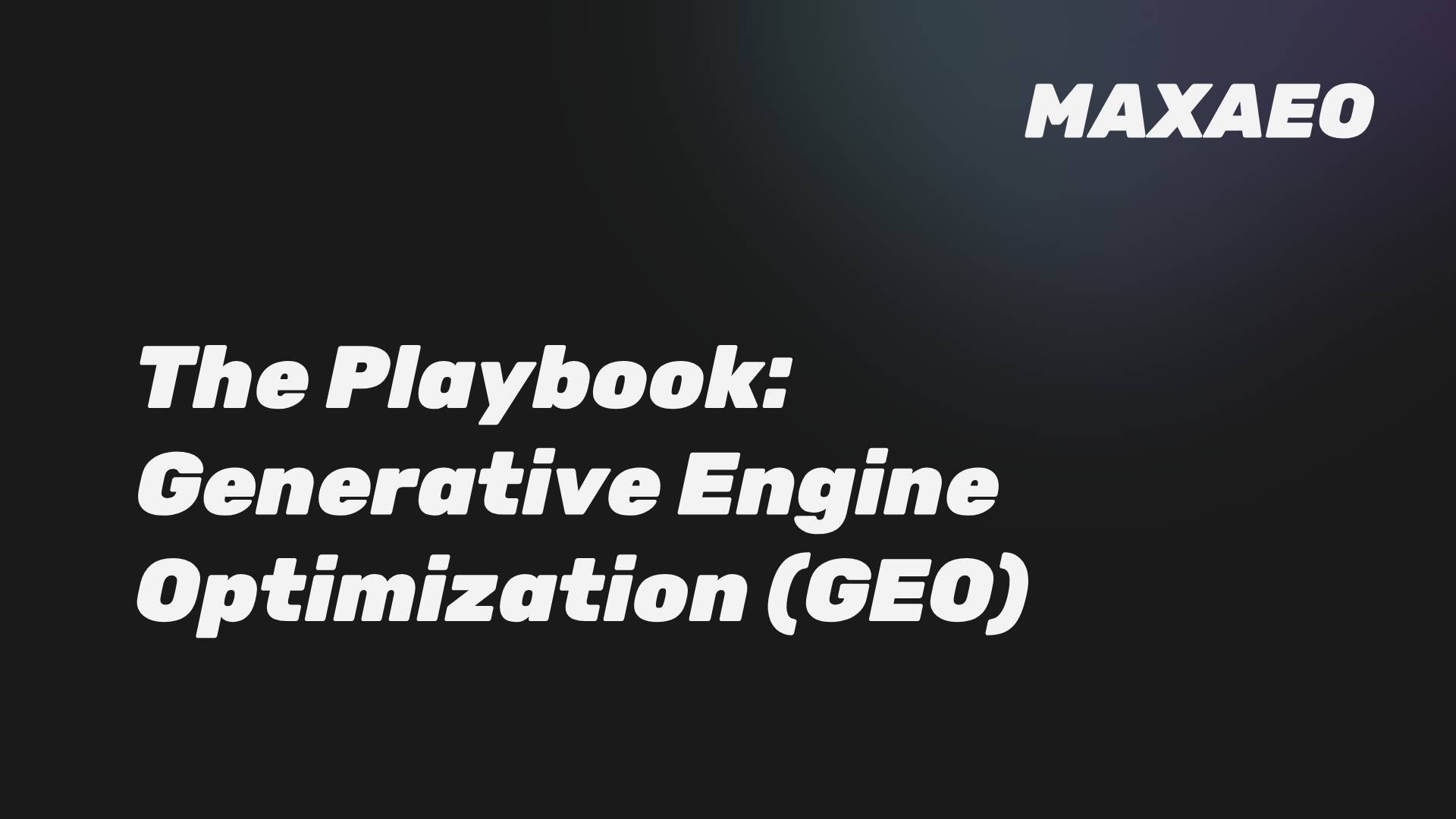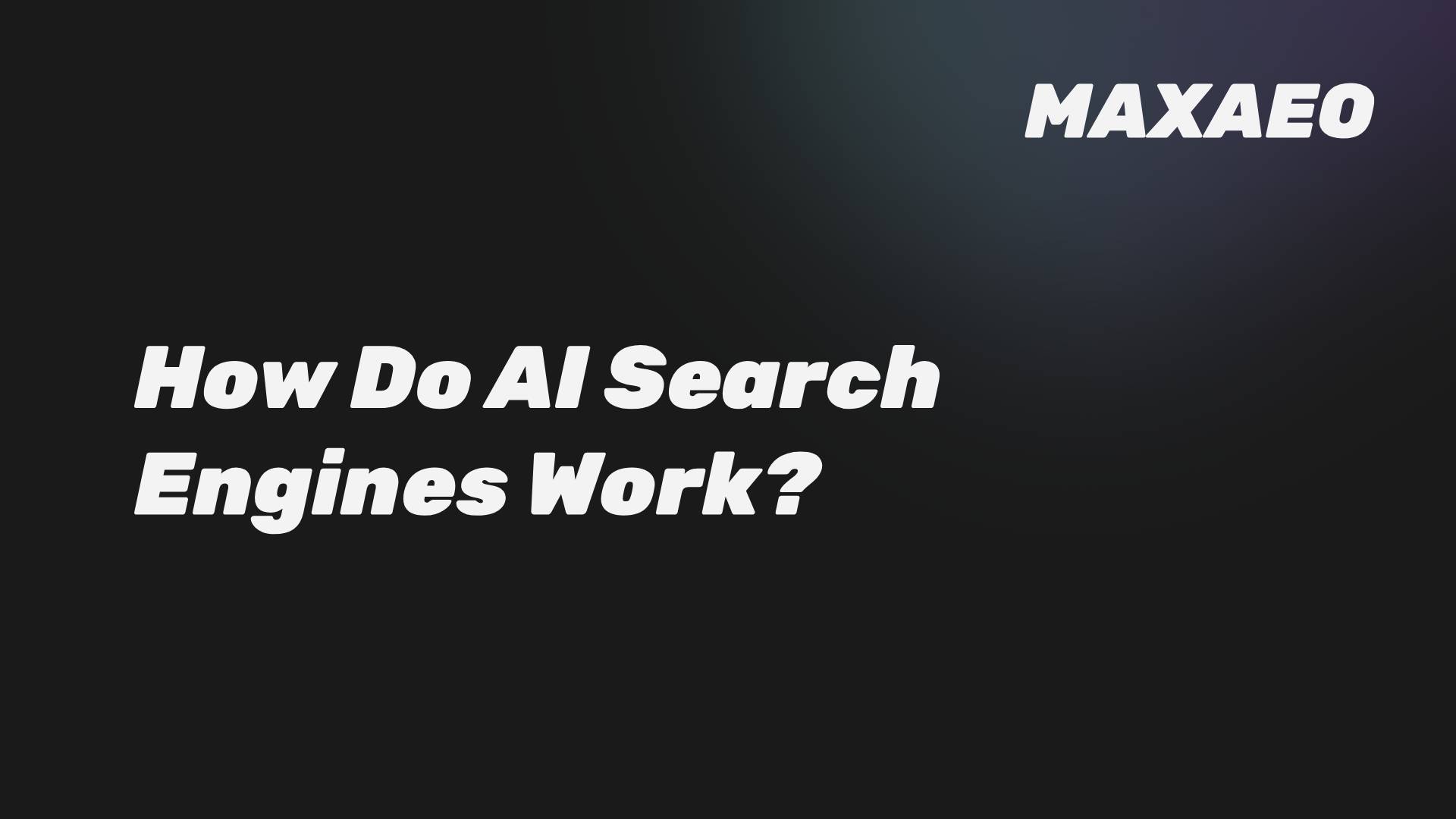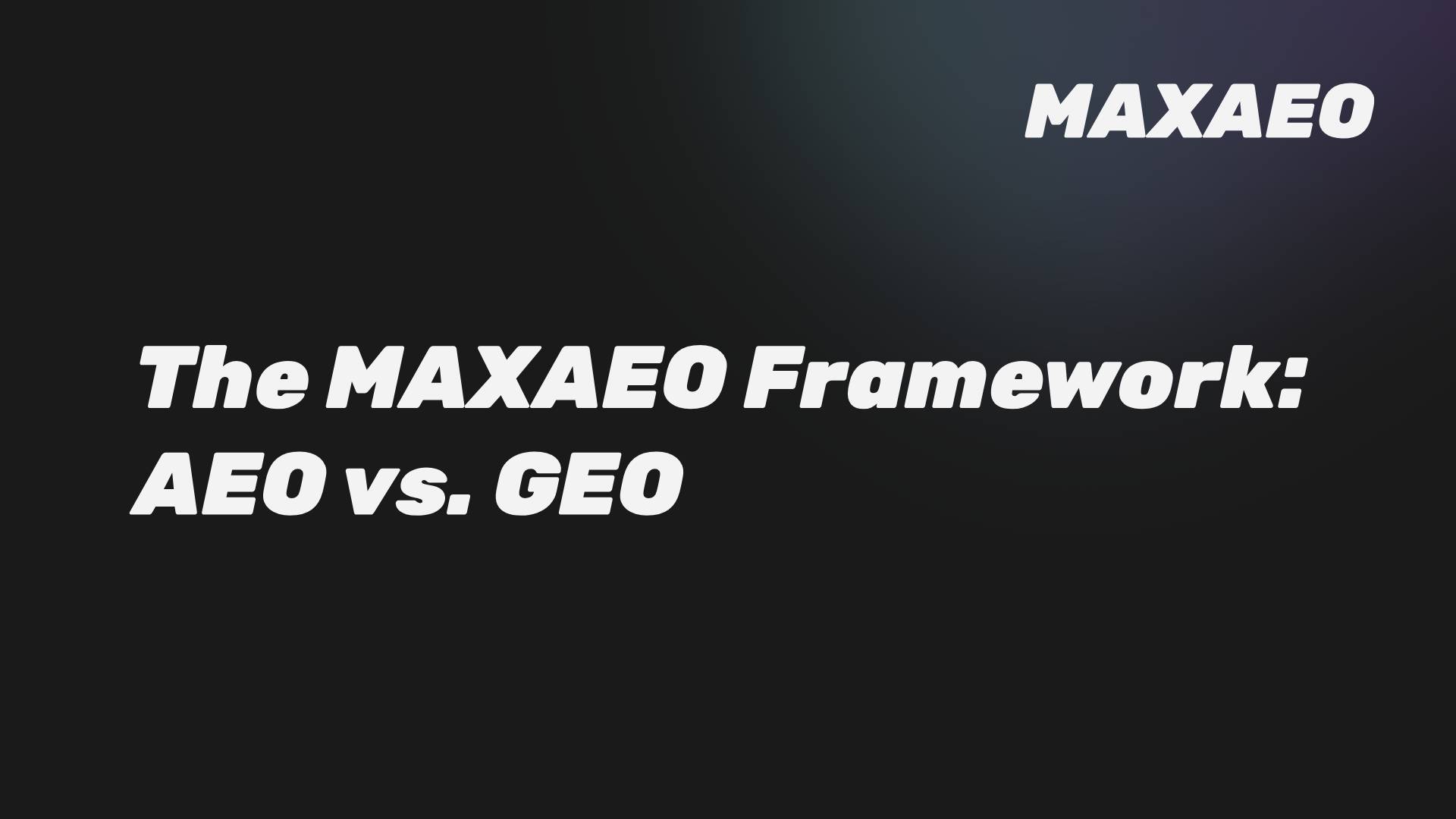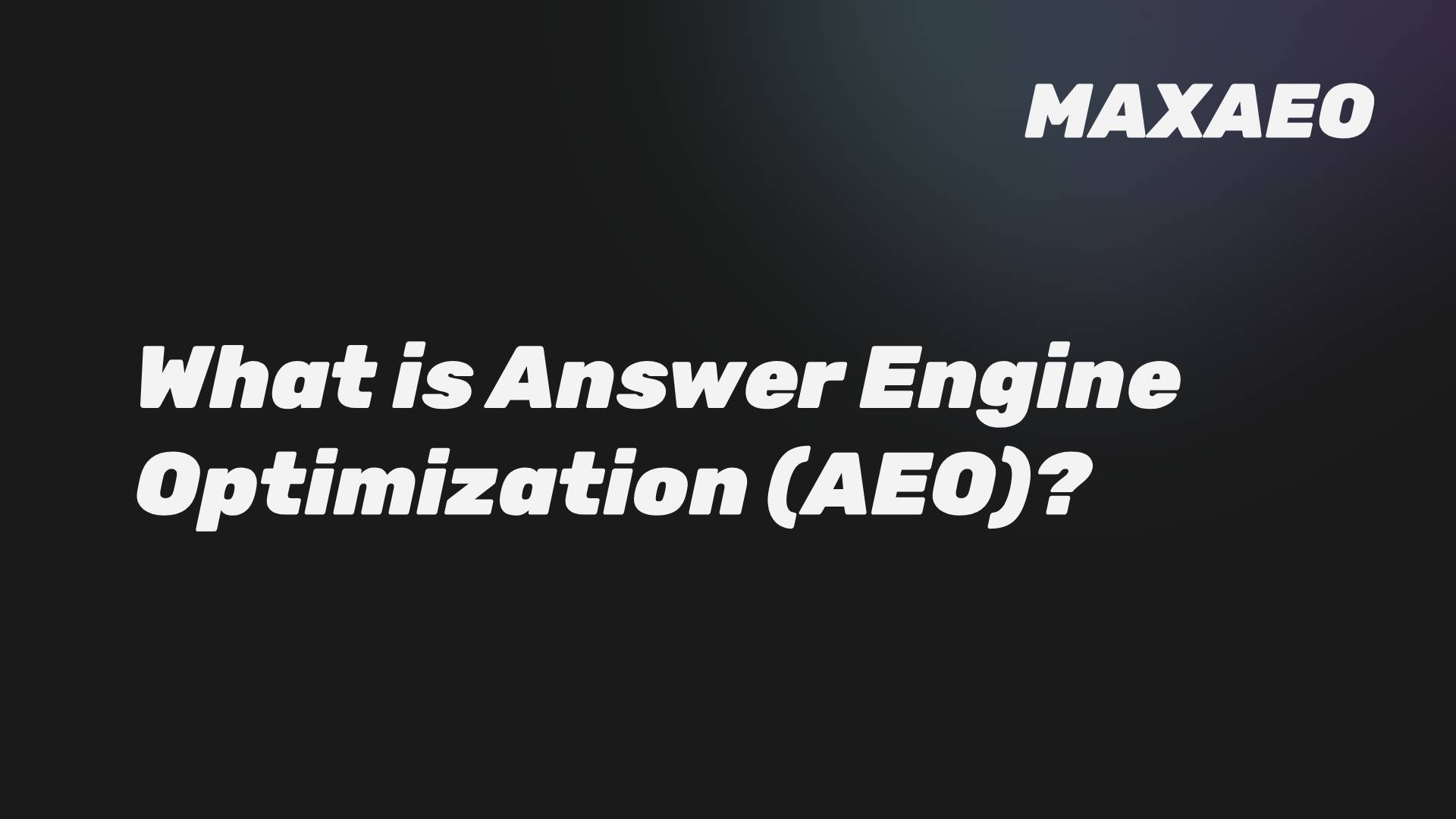· Anton Grant · Digital Marketing · 6 min read
Generative Engine Optimization (GEO): The New Rules of AI Visibility
AI is rewriting your brand narrative. Learn what Generative Engine Optimization (GEO) is and master the new playbook for influencing AI answers on ChatGPT and Google.

Generative Engine Optimization (GEO): The New Playbook for AI Brand Visibility
Your brand narrative is no longer shaped by your marketing team alone; it’s being synthesized and rewritten daily by AI. As Gartner projects a 50% drop in organic traffic by 2028 due to AI-generated answers, the most critical marketing challenge is no longer just ranking—it’s managing your brand’s story when you don’t control the storyteller.
This guide delivers the strategic playbook for Generative Engine Optimization (GEO). It moves beyond basic tactics to provide a leadership framework for building algorithmic trust, ensuring your brand is accurately represented and favorably cited in the new AI-powered information ecosystem.
What is Generative Engine Optimization (GEO)?
Generative Engine Optimization (GEO) is the strategic process of influencing how AI language models perceive, synthesize, and represent your brand within the narrative answers they generate. While traditional Search Engine Optimization (SEO) focuses on ranking a page, GEO focuses on shaping the AI’s “understanding” of your brand as an authoritative entity.
This discipline is crucial for visibility in engines like ChatGPT, Google AI Overviews, and Perplexity. It ensures that when a user asks a complex question, the AI’s synthesized response includes your brand’s perspective, data, and value proposition.
Why is GEO a Strategic Imperative, Not Just an SEO Tactic?
GEO is a C-suite concern because it directly impacts brand reputation, market perception, and long-term customer trust at an unprecedented scale. Relying on traditional SEO alone is a critical vulnerability when millions of users are bypassing websites entirely for AI-generated answers.
Ignoring GEO means you are ceding control of your brand narrative to an algorithm. This risks misinformation, omission from key consideration sets, and ceding market authority to competitors who are actively shaping the AI’s understanding of your industry.
How Do Generative Engines Decide Which Brands to Trust?
Generative engines build trust by synthesizing information from a wide array of sources, weighing signals of authority and credibility. They don’t just count keywords; they evaluate the entire digital ecosystem around a topic to identify patterns of consensus and expertise.
Key trust signals for AI models include:
- Source Diversity and Authority: Mentions and citations from a wide range of reputable sources (major publications, Wikipedia, industry forums like Reddit) are heavily weighted.
- Factual Consistency: Consistent and accurate information about your brand across multiple platforms reinforces credibility.
- Structured and Unambiguous Content: Content that is clearly written, well-structured, and easy for a machine to parse is more likely to be used correctly.
- E-E-A-T Signals: The principles of Experience, Expertise, Authoritativeness, and Trustworthiness (E-E-A-T) are paramount for building algorithmic trust.
What is the 4-Step GEO Framework for Marketers?
A successful GEO strategy is a systematic, ongoing process. This framework provides a clear path for marketing leaders to build and maintain a strong presence in AI-generated answers.
Step 1: Conduct an AI Visibility Audit
The first step is to establish a benchmark of your current AI presence. A comprehensive audit should use a dedicated AI search monitoring tool to track your brand’s visibility across key platforms.
This audit must answer:
- How often is our brand mentioned in relevant queries?
- What is the sentiment and context of these mentions?
- Which competitors are appearing, and what sources are being cited for them?
- Are there any factual inaccuracies or misrepresentations about our brand?
This data provides the baseline for your entire GEO strategy and reveals immediate opportunities. For a deeper dive, explore our comprehensive AI readiness audit.
Step 2: Engineer Your Content for Algorithmic Trust
Your owned content is a primary lever for influencing AI. Focus on creating assets that are not only valuable to humans but are engineered to be easily processed and trusted by machines.
- Prioritize Factual Density: Infuse your content with verifiable data, statistics, expert quotes, and citations. A study found this can increase AI visibility by up to 40%.
- Structure for Clarity: Use clear headings, bulleted/numbered lists, and FAQ schema. This makes it easy for AI to extract key information and present it in a summary.
- Develop Topic Clusters: Build comprehensive content hubs that demonstrate deep expertise on a core topic. This approach establishes topical authority, a powerful signal for AI.
Step 3: Build an Ecosystem of Authority Signals
Your brand’s authority is largely determined by what the rest of the internet says about you. GEO requires a proactive strategy to build a diverse and powerful ecosystem of third-party validation.
- Target High-Authority Publications: Focus digital PR efforts on publications that AI models frequently cite, such as established news outlets and top-tier industry blogs.
- Engage on Key Platforms: Cultivate a strong, helpful presence on platforms like Reddit and ensure your Wikipedia entries are accurate and well-sourced. These are foundational sources for many LLMs.
- Leverage User-Generated Content: Encourage and monitor reviews on trusted platforms. Positive sentiment and high volumes of user-generated content are strong indicators of brand trust.
Step 4: Implement Technical GEO for AI Crawlers
Finally, ensure that AI crawlers can access and correctly interpret your content. This has become a critical, and often overlooked, component of visibility.
- Allow AI Bot Access: Audit your robots.txt file to ensure you are not blocking beneficial crawlers like GPTBot or PerplexityBot.
- Use an llms.txt File: This emerging standard provides a machine-readable summary of your site’s most important content, giving AI a clear and efficient roadmap.
- Optimize for JavaScript-Light Content: Many AI crawlers cannot effectively render JavaScript. Ensure your most critical content is available in the initial server-side rendered HTML to guarantee accessibility.
How Do You Measure GEO in a World Without Clicks?
Measuring the ROI of GEO requires a shift away from click-based metrics. The goal of GEO is influence and presence within the answer itself, which often precedes—or entirely replaces—a click.
Focus on these key performance indicators:
- AI Share of Voice (SOV): The percentage of AI-generated answers for your core topics that mention your brand versus competitors.
- Citation Rate: The frequency with which your website is cited as a source in AI answers.
- Sentiment Score: Track the tone of brand mentions over time to measure reputational impact.
- Correlated Business Metrics: Monitor for a lift in direct traffic, branded search volume, and inbound leads that correlate with your GEO efforts.
Conclusion: Take Control of Your AI Narrative
Generative Engine Optimization is the new strategic imperative for brand leaders. In an era where AI synthesizes information and shapes customer perceptions, passively waiting for users to find your website is a failing strategy. By actively building an ecosystem of trust, engineering content for machine comprehension, and monitoring your presence, you can turn AI from an unpredictable threat into a powerful channel for brand visibility.
The brands that thrive will be those that don’t just participate in the digital world but actively shape how it is understood. GEO provides the playbook to do just that.
Ready to shape your competitive AI advantage? Let’s start that discussion.
Frequently Asked Questions About GEO
What is Generative Engine Optimization (GEO)?
Generative Engine Optimization (GEO) is the strategic process of shaping how AI models understand and represent your brand. It focuses on ensuring your company is accurately and favorably included in the synthesized, narrative answers generated by platforms like ChatGPT and Google AI Overviews.
How is GEO different from AEO?
AEO (Answer Engine Optimization) is more tactical, focusing on getting your content into direct answer boxes and featured snippets. GEO is more strategic, aiming to influence the AI's broader understanding and narrative about your brand by building an ecosystem of trust signals and authoritative content.
What is the primary goal of GEO for a business?
The primary goal of GEO is to control your brand's narrative in the age of AI. It aims to build algorithmic trust so that when AI engines generate answers about your market, your brand is included as a credible, authoritative, and recommended solution.
Ready to understand your brand’s current visibility in AI search? Schedule a comprehensive AI strategy consultation today and start building your plan from a position of strength.



